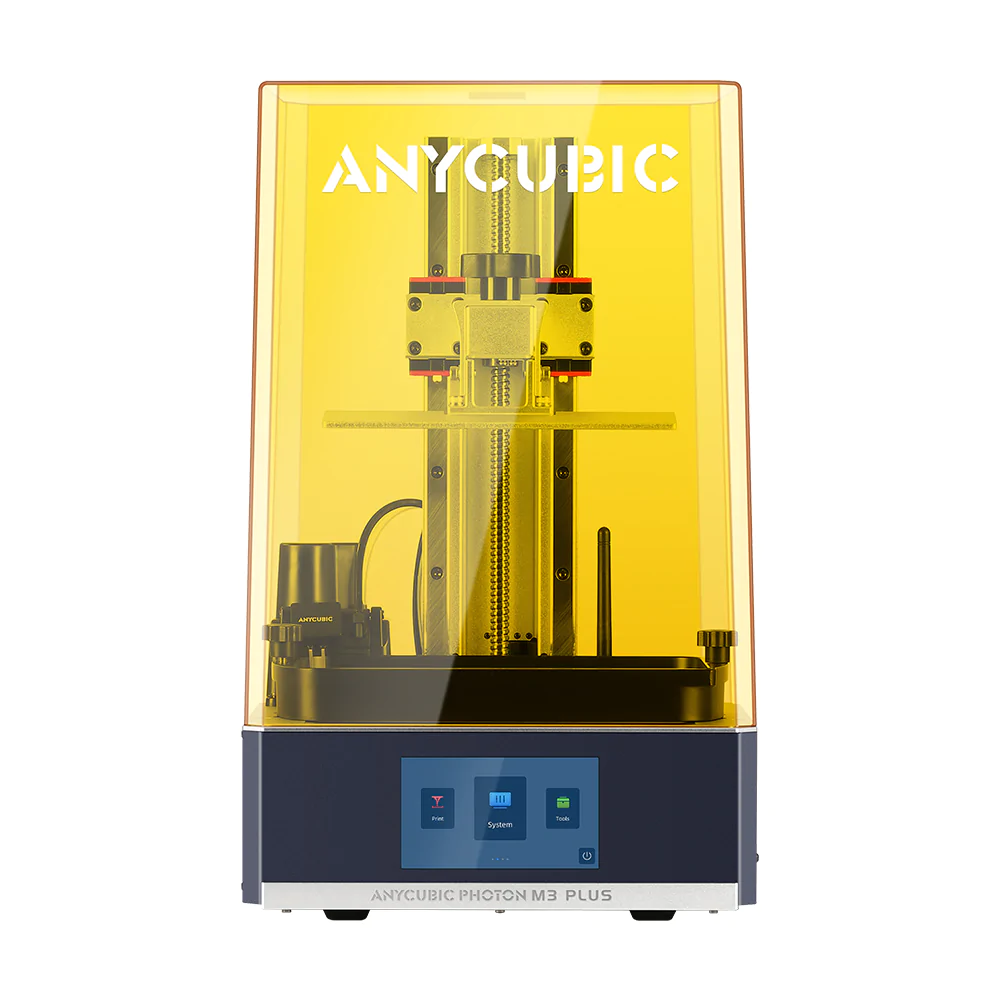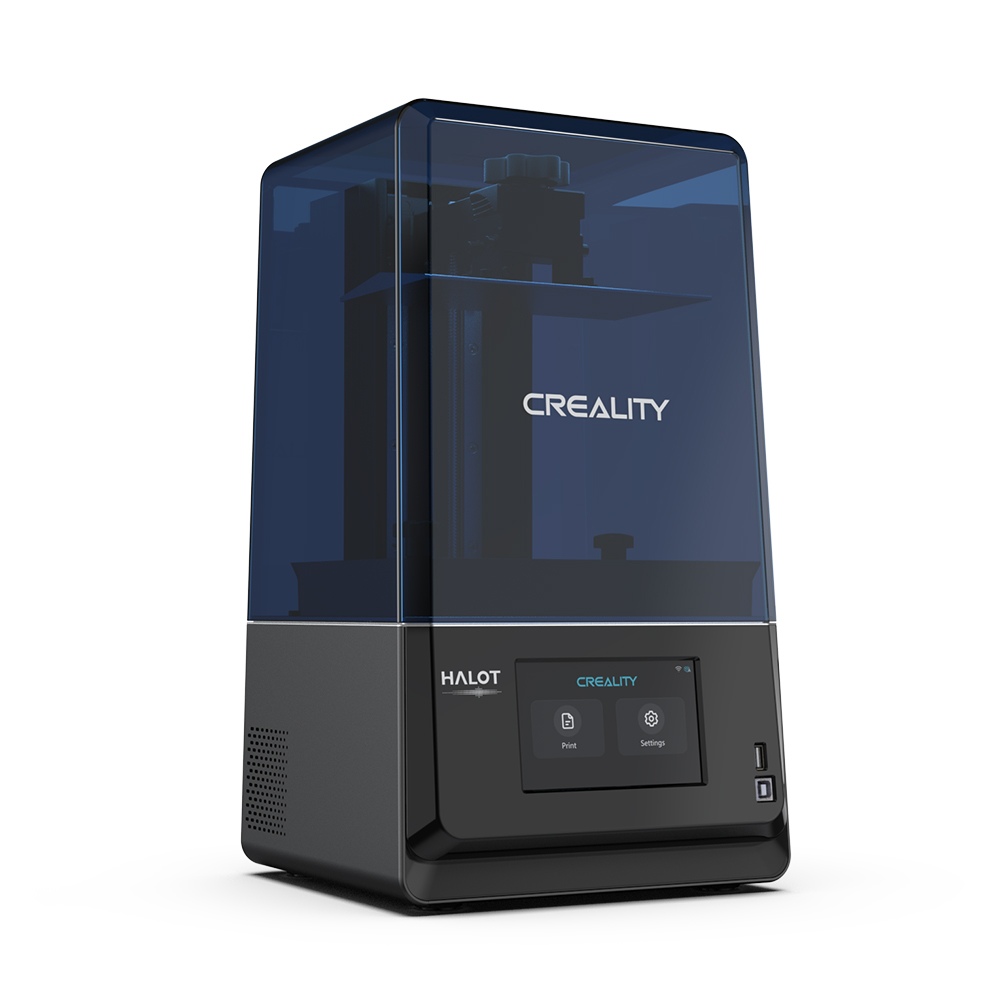Compare Photon M3 Plus vs Halot One Plus
Comparison between the best 3D printers
Choose the best 3D printer at the best price. The cheapest 3D printers are here.
Buy a 3D printer here with 3D Fila.
 |
 |
|
| Model | Photon M3 Plus |
Halot One Plus[BUY Halot One Plus] |
| Printing Material | Resin | Resin |
| Buy Resin for Anycubic Photon M3 Plus | Buy Resin forCreality 3D Halot One Plus | |
| Estimated price | $430,00 | $399,00 |
| Manufacturer | Anycubic | Creality 3D |
| Release Year | 2022 | 2022 |
| Print Volume [mm] | 197x122x245 | 102x172x160 |
| Printer Size [mm] | 290x360x475 | 236x245x416 |
| Weight [kg] | 11 | 6,8 |
| Power Loss Recovery | NO | NO |
| Technology | LCD | LCD |
| Screen Resolution | 6k | |
| Max Print Speed [s/layer] | 1 | 1 |
| Maximum Resolution [mm] | 0,01 | |
| Processor | ||
| Display | Display touchscreen 4,3'' | |
| Power Supply | 150 W | |
| Connectivity | USB / Wi-Fi | USB / Wi-Fi |
| Operating systems | ||
| Date of registration in the system | 2023-01-19 | 2022-10-11 |
| Release date | 2022 | 2022 |
| Extra features | The Photon M3 Plus printer stands out for its automatic resin filling system, capable of keeping the tank always full. It offers wireless connectivity and support for the Anycubic Cloud app, allowing remote control and monitoring, including with an optional camera. Its 34-micron resolution, provided by a 9.25-inch monochrome LCD screen, ensures high-precision prints. Printing speed is remarkable, with a layer curing in 1.5 seconds. Other features include a large build volume, laser-etched build plate, and compatibility with a wash and cure station. | Crealitys Halot-One Plus printer stands out for its 4K+ resolution that delivers sharp details and consistent surfaces. It features a fast and responsive 5-inch LCD interface, as well as easy-to-use Halot Box software. It offers Wi-Fi connectivity and remote print monitoring, as well as an integrated air filtration unit, a rare feature in this price range. The Halot-One Plus is designed for the prosumer market, combining high quality with advanced features such as Wi-Fi and air filtration. During testing, it stood out for implementing these features at an affordable cost, while maintaining functionality. It features an attractive design with a UV-resistant blue cover and a robust dual rail system for the Z-axis, ensuring smooth and consistent movements. The large LCD and high resolution of the LCD mask (4320 x 2560) are other strong points, allowing for fine details and textures in prints. |
| Support for multiple colors and materials (AMS and CFS) | NO | NO |
Notes * |
||
| Cost-benefit | 8 / 10 | 8 / 10 |
| Hardware | 2.8 / 10 | 1.4 / 10 |
| Tela | . | . |
| Print volume | 3 / 10 | 3 / 10 |
| Performance | 9 / 10 | 9 / 10 |
| [BUY Halot One Plus] |
Conclusion |
| ### Conclusion When comparing the Anycubic Photon M3 Plus and the Creality 3D Halot One Plus, both printers stand out within their category, offering compelling features and performance suited for different user needs. The Photon M3 Plus, while slightly more expensive, provides a larger print volume along with a remarkable 34-micron resolution, which significantly enhances the precision and detail of prints. Its innovative automatic resin filling system and compatibility with the Anycubic Cloud app introduce conveniences that may appeal to more active or remote users. Additionally, the larger size and weight indicate a robust design, capable of handling more significant projects. On the other hand, the Halot One Plus offers excellent value with its 4K+ resolution and integrated air filtration, features often found in higher-end models. Its compact design, combined with a fast and user-friendly LCD interface, makes it ideal for individuals who prioritize ease of use without sacrificing quality. The Halot One Plus excels in delivering impressive details and reliable performance while retaining an attractive price point. Both printers received similar cost-benefit ratings, indicating that users are likely to find value in either option. Ultimately, the decision may come down to specific needs—whether you prioritize larger print volumes and advanced remote capabilities or a compact design with enhanced filtration and a user-friendly interface. Depending on your particular requirements and usage scenarios, either printer could be the best choice for achieving high-quality prints at a reasonable price. |

